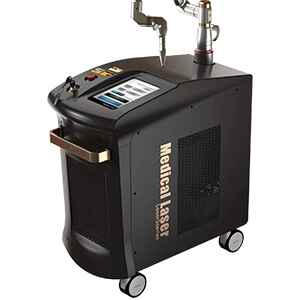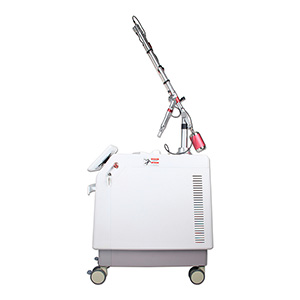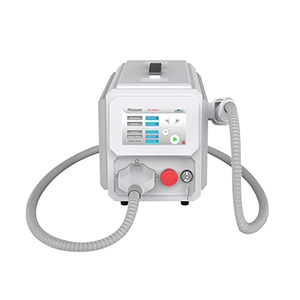Does Laser tattoo removal cause scarring?
Unlikely. Unless you already have an existing scar, are prone to scarring or keloids, or are reckless with your aftercare; laser tattoo removal will typically not cause scarring.
The root of this myth may come from pre-existing scarring. If scarring occurred while getting a tattoo, or since getting it, the tattoo may have covered it up, making it difficult to notice. In this case, the removal of the tattoo would reveal the scar, making it appear as though the scarring is a result of the removal process.
Should I expect excessive bleeding from laser tattoo removal?
No, excessive bleeding is not expected from laser tattoo removal. Anything more than pinpoint bleeding is extremely rare.
Pinpoint bleeding is small (like a pinpoint), and usually inside the epidermis. So there should never be an excessive amount of blood on the dressing that is placed to cover the area after your treatments. If there is excessive bleeding, then either the settings on the laser are incorrect or you’re simply not being treated with the appropriate laser.
Is laser tattoo removal instant?
No. Tattoo removal is faster and more effective than alternatives, like tattoo removal cream, but results are not instantaneous. An immediate frosting that occurs directly after has patients thinking that their tattoo is gone, but this reaction is actually the ink being penetrated by the laser and goes away in about 1-5 minutes after the treatment.
Laser tattoo removal actually takes some time, months to even years. Each session will break up more ink making it easier for your body to remove. The ink removes itself from your body during the 6-8 weeks in between each treatment.
Are new tattoos easier to remove?
No. New tattoos are actually harder to remove and there are more unnecessary risks involved. Your body is still reacting to receiving a new tattoo, so it’s best to wait 8 weeks or more before having laser tattoo removal done.
Are all tattoo removal lasers equally effective?
No. Choosing the appropriate laser for your tattoo removal is critical. Do the proper research, because not all lasers are created equal. Speak to a removal specialist to help you determine which kind of laser will be most effective for the colors used in your tattoo. We recommend you look up case studies of removal done with a particular laser type to give you a better idea of how it will perform for you.
Find out which lasers are available in your city for tattoo removal and go onto the manufacturer’s websites. Read testimonials from people who have been treated with this laser and ask questions on blog forums and social media postings. Being treated by a laser that does not specialize in tattoo removal will leave you with very little to no results.
Q-switched lasers are among the most popular and effective tattoo removal lasers.
Laser tattoo removal is largely based on many factors
True. The laser tattoo removal process commonly factors in skin type, ink density, colours, and location of the tattoo. It also has a lot to do with proper aftercare.
Generally, the healthier you are, the easier it will be before your body to flush away those unwanted pigments that have been shattered by the laser. Also, the age, presence of previous scars, and previous tattoo cover-ups also play a major role in how many sessions it will take to remove your tattoo.
The laser tattoo removal experience will be different for every person and every tattoo. When looking for this service, be sure to find a provider that is attentive to your individual needs. Happy Fading!
Tips for Laser Tattoo Removal Aftercare
The best thing you can do is to do nothing.
Rest and relaxation.
Rest and relaxation are on top of the list of laser tattoo removal aftercare best practices. Just as your body needs time to rebuild muscle fiber after hitting a hard workout at the gym, it needs plenty of time to recuperate and rebuild healthy skin.
You don’t have to stay in bed all week, but do your best to avoid any strenuous physical activities like working out or playing sports for 24 hours immediately following your laser tattoo removal treatments. Depending on the size of the tattoo, you may want to consider taking a break from physical activity for longer. The more energy you leave your body to recover after a tattoo removal session, the more you’ll have available to help it heal.
Smaller tattoos need less downtime because the affected area is smaller. This means your body doesn’t need to work as hard as when trying to heal a larger tattoo. This doesn’t mean you get a free pass though. You should still rest in between treatments.
Potential Side Effects of Laser Tattoo Removal Treatment
You can expect some mild side effects directly after your tattoo removal treatments. Below you’ll find a list of potential side effects and what you can do to help your body heal and reduce discomfort during the 6-8 weeks between sessions. Help yourself form good aftercare habits by writing each symptom you experience on a list and noting down the steps you can take to soothe it. Consult your list after each session to help your body recover.
Blistering
Blistering is caused by irritation of the skin by a new tattoo, a cover-up, or dense ink. If you have sensitive skin and get blisters after a sunburn, your skin is likely to react the same way after a laser tattoo removal treatment. Blistering looks like a bubble on the top layer of skin either within or around the tattoo. Don’t burst your blisters. They are your body’s way of protecting your skin and stopping bacteria from coming in contact with it. Popping a blister can result in infection, especially if not done properly. Blistering from laser tattoo removal lasts for about 3-5 days. If the discomfort of a blister becomes severe, let your laser tattoo clinic know or see your doctor.
Swelling
Swelling is normal after laser tattoo removal treatments. Depending on the size of the tattoo, there are a few measures you can take to manage the swelling. If your tattoo is on the upper or lower trunk, swelling will normally subside the day after the treatment. Gently ice the area intermittently for 10 minutes at a time with 5 minutes in between to help with the inflammation.
Resting will also help with larger tattoos on the torso, back and chest areas avoiding vigorous, repetitive movements. For swelling on the arms, keep the area elevated above your heart to help with circulation, which delivers everything your body needs to heal. For tattoos on the legs, it’s important to keep the feet up because gravity will pull blood down and hinder circulation. Depending on the size and location of your tattoo, swelling will subside between 3 and 5 days after treatment.
Redness
Your skin may become red directly after treatments. This symptom can last for up to 72 hours. The color is caused by minimal to moderate pinpoint bleeding within the skin following a treatment session. You should never see blood on your dressing unless you are having eyebrow tattoo removal or have a popped blister. In these cases some blood may be seen, but if you start to see excessive amounts see a doctor and talk to your tattoo removal clinic. Redness of the skin is sometimes accompanied by blisters. Redness in or around the tattooed area indicates that your top layer of skin is still very sensitive.
Avoid exercise that will create friction and make sure to gently pat off any sweat or water to dry the skin under your dressing. Let it dry for 20 minutes before covering it again. Some people experience redness of skin longer than others, but if the redness does not get progressively better within 7-10 days, contact your clinic or a doctor.
Itchiness
Itchiness is common, but not everyone experiences it. The Itchiness can begin as soon as a few hours after a laser tattoo removal treatment and can last up to 6 weeks. If you experience severe itchiness, you can take an over-the-counter antihistamine to help alleviate some discomfort but never scratch or disturb the affected area.
Crusting, Dryness, And Scabbing
Crusting or dryness is very common once the blisters have subsided and scabbing starts to form. Sometimes the affected area looks a lot worse than it is because crusting can sometimes make the tattoo look even darker. Don’t worry – once the scabbing has healed the affected area will appear lighter. There’s not much you can do but leave the skin alone and make sure it isn’t disturbed or irritated. Never pick or remove the skin from a scab as this could cause unnecessary scarring. Crusting will last for as long as your skin needs to protect the area, so be patient with this step.
Infections
While scabbing, crusting, and dryness are perfectly natural, It is important to know the difference between these normal symptoms and infection. An infected area [has increasing redness and pain, and can have pus-like discharge as well]. If you have an infection, you’ll notice a discharge from a deep lesion within the skin. This lesion won’t get better without medical attention. You’ll feel pain and discomfort and the redness may spread. If you suspect you have an infection, contact medical professionals immediately.
Sticking With Your Laser Tattoo Removal Aftercare
Laser tattoo removal aftercare is critical to a successful tattoo removal because it helps your body heal better and faster after each treatment. Following these recommended tattoo removal aftercare instructions can have a real impact on the outcome of your treatment. Practicing proper care will help make subsequent treatments more safe and more effective. However, if the area being treated hasn’t healed sufficiently between sessions, your clinic may ask you to wait longer until your next session out of concern for your safety. Your clinic and the doctor performing your treatment have the most experience in the matter.
If you experience the same symptoms after each treatment, give yourself an extended period of time in between sessions to help the skin heal fully. Rushing the treatment won’t lead to a faster recovery but may actually leave you looking worse off in the end. Every individual will have a different experience and every tattoo removal is different.
Just keep thinking about how good your new tattoo will look after the fading!
If you are interested in learning more about the Q-switched ND: Yag Laser Tattoo Removal Machine or discussing purchasing aesthetic laser machines or other medical laser machines, fill out the form below and we will get back to you ASAP. Or simply call Phone: +0086 15001300057



